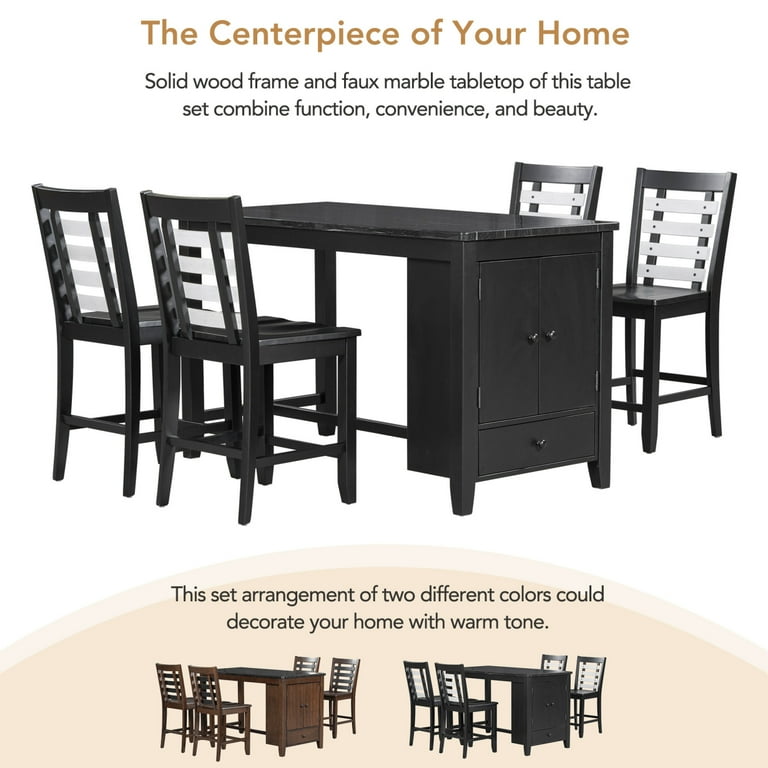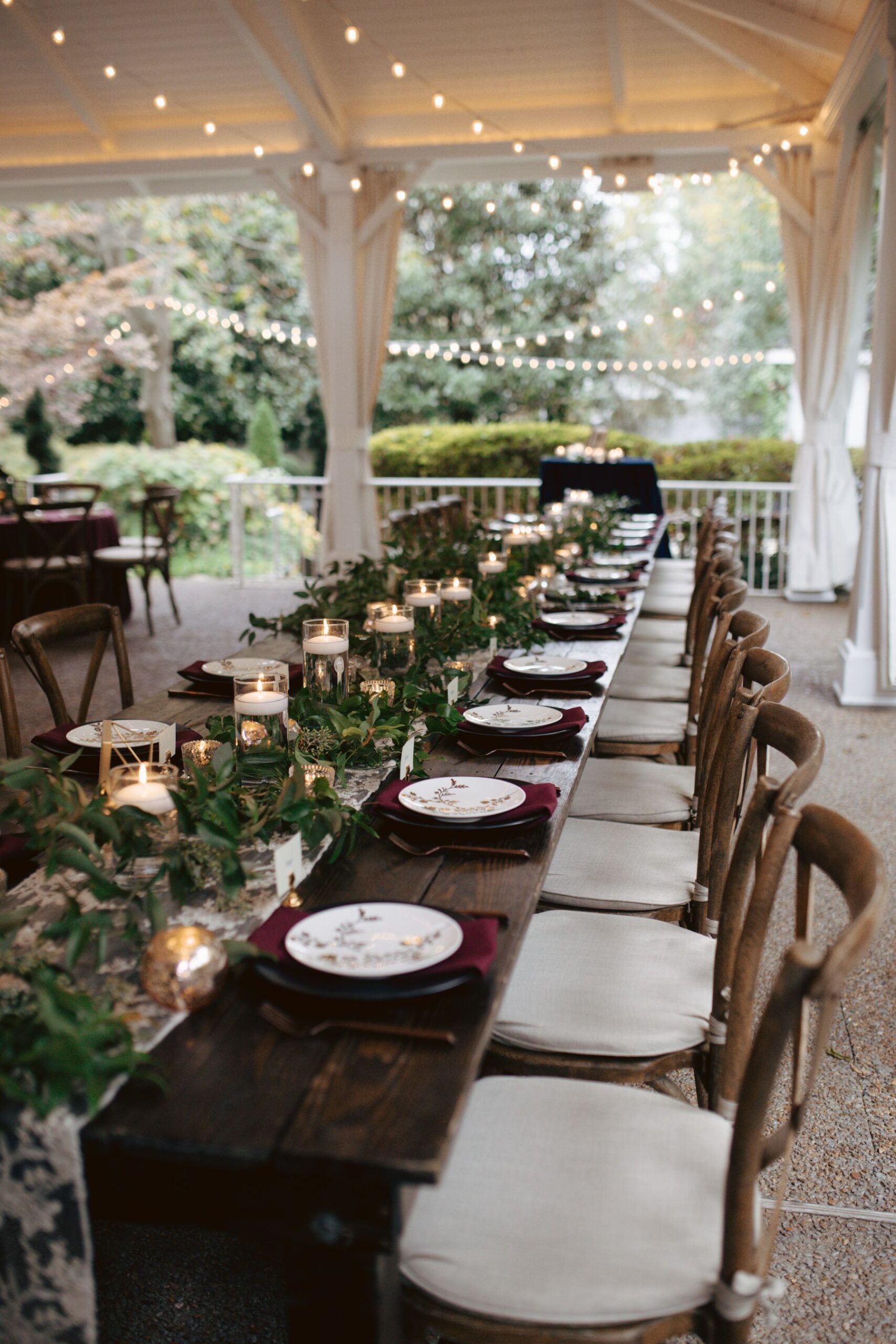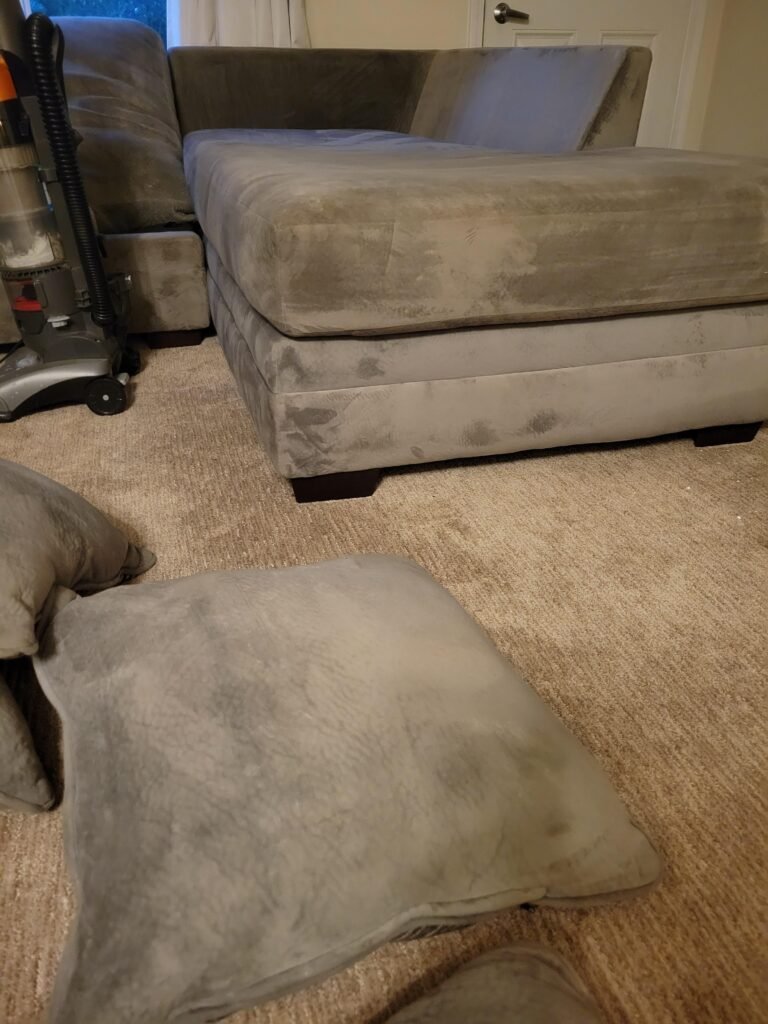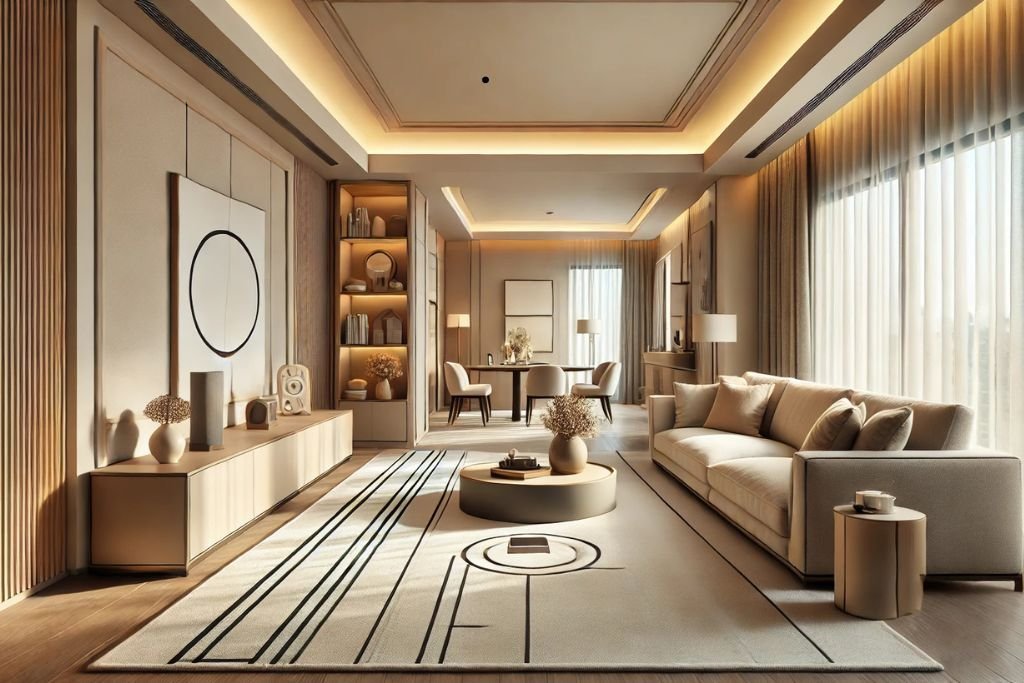As an Amazon Associate I earn from qualifying purchases.
Combining functions in furniture arrangement can maximize space and enhance usability. A well-planned layout transforms a room into a multifunctional area.
Imagine a living room that doubles as a guest room or a workspace that also serves as a dining area. Smart furniture arrangement can make this happen. It’s about using pieces in creative ways to serve multiple purposes. A sofa bed, for example, provides seating by day and a sleeping area by night.
Shelves can hold books and display decor, adding style and storage. This approach not only saves space but also adds flexibility to your home. Ready to explore how you can combine functions in your furniture arrangement? Let’s dive in!
Importance Of Functional Furniture Arrangement
The importance of functional furniture arrangement cannot be overstated. Properly arranging your furniture can transform a space. It can make rooms feel larger, more inviting, and efficient. Let’s explore how functional furniture arrangement enhances space utility and aesthetics.
Enhancing Space Utility
Functional furniture arrangement maximizes every inch of your space. It ensures that pathways are clear and usable. You can move around freely without obstacles. This kind of arrangement also helps in organizing your belongings better. Furniture pieces can serve dual purposes, like a sofa bed. This way, you use the space smartly and make the most out of it.
Improving Aesthetics
Good furniture arrangement significantly impacts the room’s look. It creates a balanced and harmonious environment. Arranging furniture in a way that complements the room’s design is crucial. It brings out the beauty of each piece. Colors, textures, and styles come together cohesively. This makes the space look more put together and pleasing to the eye.
Assessing Your Space
Before arranging your furniture, take the time to assess your space. Understanding your room’s layout and dimensions helps you plan effectively. This step ensures your furniture fits and functions well. Here are some key tasks to consider:
Measuring Room Dimensions
Accurate measurements are crucial. Use a tape measure to get the room’s length and width. Record these numbers for reference. Also, measure the height of the walls. This helps when choosing tall furniture pieces. Note any architectural features like windows, doors, and built-in elements.
Consider creating a simple floor plan. Draw the room to scale on graph paper. Mark all measurements and features. This visual aid helps you plan furniture placement.
Identifying Key Areas
Identify the room’s key areas. These include focal points and functional zones.
- Focal Points: These could be a fireplace, a large window, or a TV. Arrange furniture to highlight these features.
- Functional Zones: Determine zones for activities like lounging, dining, or working. Allocate space for each function.
Think about traffic flow. Ensure there is enough space for movement. Avoid blocking pathways with large furniture pieces. This keeps the room open and accessible.
| Task | Details |
|---|---|
| Measure Room Dimensions | Length, width, height, and architectural features |
| Create a Floor Plan | Draw to scale, mark measurements and features |
| Identify Focal Points | Fireplace, large window, TV |
| Determine Functional Zones | Lounging, dining, working areas |
| Plan Traffic Flow | Ensure open and accessible pathways |
By assessing your space, you set the foundation for effective furniture arrangement. This approach ensures your room is both functional and aesthetically pleasing.
Choosing Multi-functional Furniture
Choosing multi-functional furniture can maximize space and add flexibility to your home. This type of furniture serves multiple purposes, which is ideal for small spaces. It can help you stay organized and create a more efficient living environment.
Benefits Of Convertible Furniture
Convertible furniture offers many advantages for any home. Here are some key benefits:
- Space-saving: Convertible furniture, like sofa beds and extendable dining tables, can save valuable space in small rooms.
- Cost-effective: You can save money by purchasing one piece of furniture that serves multiple functions.
- Versatility: These items adapt to your needs, making them perfect for changing circumstances.
- Aesthetic Appeal: Modern convertible furniture comes in stylish designs that enhance your home’s look.
Selecting Storage Solutions
Effective storage solutions keep your home clutter-free. Here are some tips for selecting the right storage solutions:
| Furniture Type | Storage Feature |
|---|---|
| Ottomans | Hidden compartments for blankets, books, or toys |
| Beds with Drawers | Under-bed storage for clothes, shoes, or linens |
| Shelving Units | Open or closed shelves for various items |
| Coffee Tables with Storage | Hidden or open storage for magazines, remotes, or small items |
When selecting storage solutions, consider the size of your space and your specific needs. Opt for furniture that offers both style and function to keep your home tidy and aesthetically pleasing.

Credit: www.walmart.com
Balancing Style And Function
Combining the functions of furniture arrangement with style can be challenging. The goal is to achieve a perfect balance between aesthetics and practicality. This ensures that the space is not only beautiful but also functional.
Matching Decor Themes
Choosing a decor theme is essential. It creates a cohesive look throughout the space. Consider the following tips:
- Color schemes: Select colors that complement each other. A consistent color palette ties everything together.
- Textures and materials: Mix different textures. This adds depth and interest to the room.
- Furniture styles: Ensure furniture pieces match the overall theme. This maintains harmony in the design.
For instance, a minimalist theme might include sleek, modern furniture. A rustic theme could feature wooden elements and earthy tones. Matching decor themes create a unified and pleasing environment.
Prioritizing Comfort
Comfort is key to a functional space. Ensuring that furniture is comfortable makes the room more inviting. Here are some ways to prioritize comfort:
- Seating: Choose chairs and sofas with ample cushioning. This provides support and relaxation.
- Placement: Arrange furniture to facilitate easy movement. Avoid overcrowding the room.
- Ergonomics: Ensure that furniture promotes good posture. This is important for both health and comfort.
Comfortable spaces encourage relaxation and social interaction. This makes the room not just stylish but also livable.
| Aspect | Importance |
|---|---|
| Color schemes | High |
| Seating comfort | High |
| Furniture placement | Medium |
Striking a balance between style and function creates a space that is both beautiful and practical. By matching decor themes and prioritizing comfort, you can achieve a harmonious and inviting environment.
Creating Focal Points
Creating focal points in a room can make a huge difference. It draws attention and adds interest to your space. By carefully arranging your furniture, you can highlight these focal points. Let’s explore how to create these captivating areas in your home.
Using Statement Pieces
Statement pieces are key in creating focal points. A bold sofa, an elegant coffee table, or an eye-catching artwork can serve as a great focal point. Place these items in a prominent spot where they can be seen easily. This draws the eye and sets the tone for the room.
Choose items that reflect your style and personality. They should stand out but also blend well with the rest of your decor. This balance creates a cohesive and appealing look.
Arranging Around A Centerpiece
Centerpieces are not just for dining tables. They can be used in living rooms, bedrooms, and more. Arrange your furniture around a central piece to create a sense of harmony. This could be a fireplace, a large window, or even a stylish rug.
Ensure the centerpiece is the highlight of the room. Position sofas and chairs to face it. This arrangement invites conversation and makes the room feel more organized. Use smaller items like lamps or plants to complement the centerpiece.
Remember, the goal is to guide the eye naturally around the room. This makes your space feel inviting and well-thought-out.
Optimizing Traffic Flow
Optimizing traffic flow in your home is crucial. It ensures ease of movement and safety. Proper furniture arrangement plays a key role. Below are some strategies to help you optimize traffic flow.
Planning Pathways
Planning pathways is essential for smooth movement. Start by identifying the main routes in your room. These are the areas people use most to move around. Consider doorways, windows, and focal points like the TV or fireplace.
Next, ensure there is enough space for movement. Aim for at least 30 inches of clear space between furniture. This allows people to pass comfortably without bumping into things.
Use a floor plan to visualize pathways. You can draw it on paper or use online tools. Mark the routes and arrange the furniture accordingly. This helps you see the flow before moving heavy items.
Avoiding Clutter
Clutter can disrupt traffic flow. It makes spaces feel cramped and hard to navigate. Focus on simplicity and functionality.
Start by removing unnecessary items. Keep only the furniture you need and use. This creates more open space and a cleaner look.
Use storage solutions to keep things organized. Baskets, shelves, and cabinets can help. Place them strategically to avoid blocking pathways.
Arrange furniture to create clear zones. For example, a seating area or dining space. This helps define spaces and makes it easier to move around.
Below is a simple table to summarize key points:
| Tips | Details |
|---|---|
| Pathways | Identify main routes, ensure 30 inches of space, use a floor plan |
| Clutter | Remove unnecessary items, use storage solutions, create clear zones |
By focusing on these strategies, you can optimize traffic flow. This makes your home more functional and inviting.
Incorporating Technology
Incorporating technology into furniture arrangement can enhance both functionality and aesthetics. Smart furniture and well-managed cables and wires can make a significant difference. It creates a seamless and modern living space. Let’s explore how to integrate technology efficiently into your home.
Integrating Smart Furniture
Smart furniture combines traditional design with modern technology. This type of furniture can include features like built-in charging ports. It can also have wireless charging pads. Adjustable height desks and smart beds with sensors are popular choices. These pieces not only look good but also serve multiple purposes. They help in maximizing space and provide ease of use.
Managing Cables And Wires
Messy cables can ruin the look of any room. Proper cable management is essential. Use cable organizers and clips to keep wires tidy. Opt for furniture with built-in cable management systems. Conceal wires behind furniture to maintain a clean appearance. This makes your space look organized and clutter-free. It also improves safety by reducing trip hazards.

Credit: gwsmasonry.com
Adapting For Seasonal Changes
Adapting your furniture arrangement for seasonal changes can greatly enhance your living space. By making a few strategic adjustments, you can create a more comfortable and visually appealing environment. Whether it’s summer or winter, these tips will help you make the most of your home throughout the year.
Rearranging For Summer And Winter
In the summer, focus on creating an open and airy feel. Move furniture away from windows to allow more light and air to flow. Lightweight fabrics like cotton and linen can help keep the space cool.
In winter, arrange your furniture to make the room feel cozy and warm. Place seating near fireplaces or heaters. Use heavier fabrics like wool and velvet for a snug atmosphere.
| Season | Furniture Arrangement Tips |
|---|---|
| Summer | Open up spaces, use lightweight fabrics, move furniture away from windows. |
| Winter | Arrange seating near heat sources, use heavy fabrics, create cozy corners. |
Using Seasonal Decor
Adding seasonal decor can instantly refresh your home. For summer, incorporate bright colors and natural elements. Think fresh flowers, light curtains, and vibrant throw pillows.
In winter, switch to warm tones and cozy textures. Use items like thick blankets, candles, and earthy decorations to create a warm environment.
- Summer Decor: Bright colors, fresh flowers, light curtains, vibrant pillows.
- Winter Decor: Warm tones, thick blankets, candles, earthy decorations.
Personalizing Your Space
Personalizing your space transforms a house into a home. It brings comfort, warmth, and reflects who you are. This process involves more than placing furniture. It’s about creating a space that feels uniquely yours. Let’s explore how you can achieve this through furniture arrangement.
Adding Personal Touches
Personal touches make your space feel special. Use items that have meaning to you. This could be family photos, travel souvenirs, or handmade crafts. Place these items where you can see them daily. They can be on shelves, coffee tables, or walls. These touches tell your story and make your space unique.
Reflecting Your Personality
Your personality should shine through your décor. Choose colors, patterns, and textures that you love. If you like bright colors, use them in your cushions or rugs. If you prefer a calm space, use soft tones and simple designs. Your furniture should reflect your style. A vintage sofa, modern chairs, or a rustic table can show who you are.

Credit: southerneventsonline.com
Frequently Asked Questions
What Are The Benefits Of Furniture Arrangement?
Proper furniture arrangement enhances room functionality and aesthetics. It improves traffic flow, maximizes space, and creates a balanced look.
How Do I Start Arranging Furniture?
Begin by measuring your space. Consider the room’s focal point and create a layout that promotes easy movement.
Can Furniture Arrangement Affect Room Ambiance?
Yes, arranging furniture strategically can influence a room’s ambiance. It can make a space feel cozy, spacious, or functional.
What Is The Rule Of Thumb For Furniture Placement?
Maintain clear pathways by allowing at least 18 inches between furniture pieces for easy movement.
Conclusion
Arranging furniture well creates a balanced and functional space. You maximize comfort and style. Smart placement helps in better movement. Each piece serves a purpose. You can make small rooms look bigger. Thoughtful layout adds harmony to your home. Try different setups to find what works best.
Enjoy a more organized and pleasant living area.
As an Amazon Associate, I earn from qualifying purchases.


